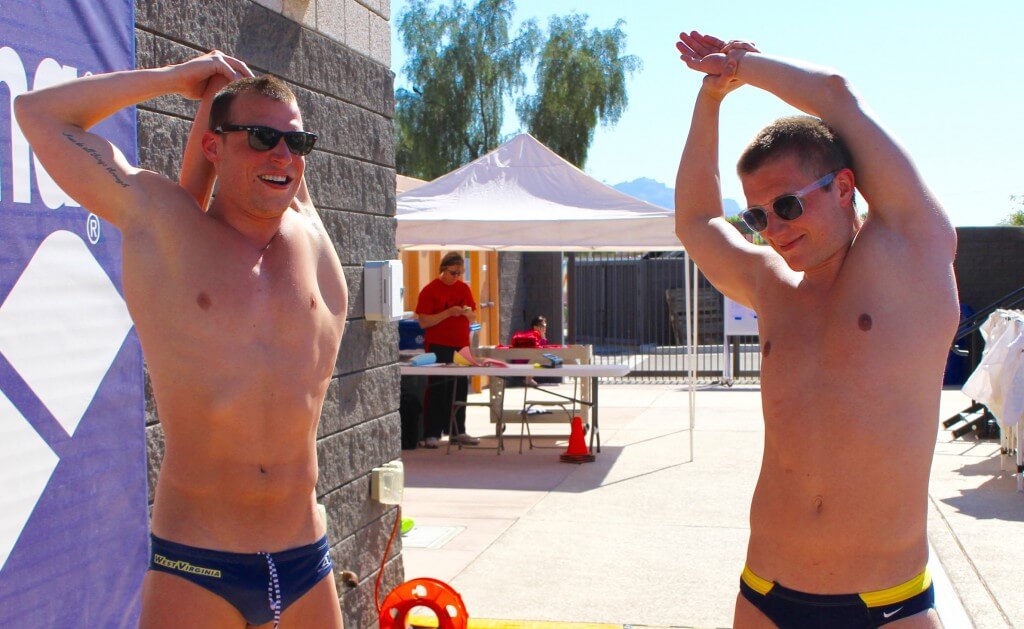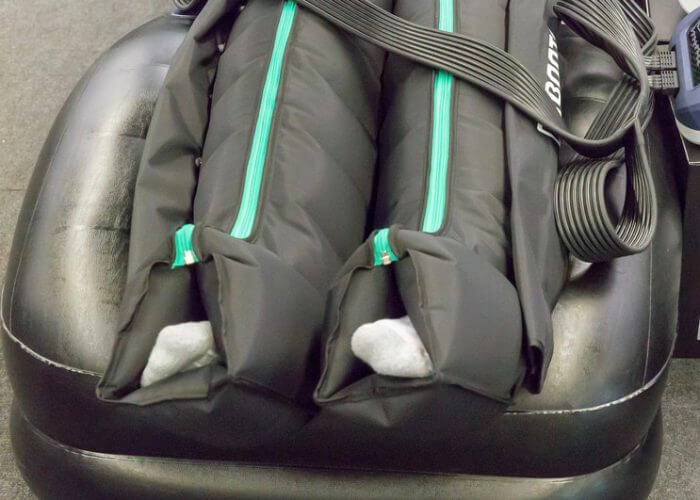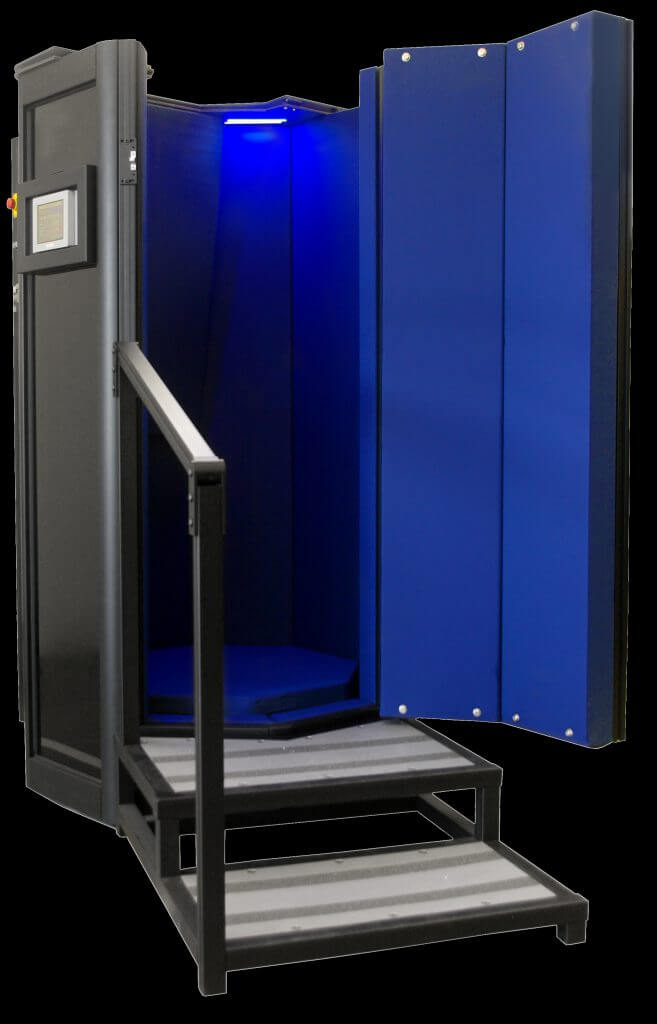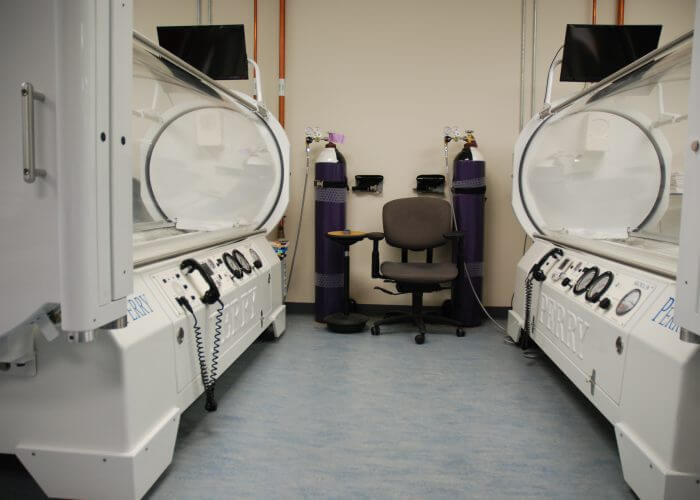3 Unusual Recovery Methods For Athletes

By Devin Javens, Swimming World College Intern.
The human body typically requires a couple days of recovery to heal from vigorous exercise, but with technological advances within the world of sports, some unusual techniques are being used to speed up the this process within athletes.
These new ideas are starting to become popular alternatives to the typical recovery routines of ice baths, rolling out and stretching. Check out these three unusual recovery strategies that are quickly gaining status among today’s athletes.
1. Compression Boots.

Photo Courtesy: Flickr
Compression boots are a great strategy used to flush waste products out of the body through the compression of both legs. These boots cover the entire leg and provide compression for about 20 to 30 minutes to circulate the blood throughout both limbs, promoting a faster recovery. By having multiple sections of the boots compressing and decompressing simultaneously, the circulation of blood is improved. This promotes flexibility and repairs tissue and injuries. Because of this, the body moves fluids through the cardiac system and helps removes lactic acid and other toxins from the limbs.
Compression boots also have many other benefits besides promoting a faster recovery. The compression can reduce inflammation and the development of cellulite, strengthens loose skin, prevents varicose veins and can eliminate first-stage varicose. It also reduces the collection of fluid within the legs. Many companies have expanded their product to a similar treatment for arms. These arm sleeves reap the same benefits as the compression boots, providing additional relief and recovery in the arms.
2. Cryotherapy.

Photo Courtesy: Wikimedia Commons, Popeallstar32
This method of recovery is probably what people consider to be one of the oddest techniques but is seen as a similar strategy to an ice bath. Rather than sitting in a cold tub, cryotherapy patients stand in a cold tank with their head sticking out in below-freezing temperatures (approximately -200 degrees Fahrenheit). Although the session only lasts about three to five minutes, cryotherapy is known for speeding along the recovery process and healing injuries by briefly decreasing blood flow, inflammation and pain.
Additionally, athletes have reported decreased muscle soreness and tiredness after enduring cryotherapy sessions. According to the Cooper Institute and recent studies (Gill et al., 2006; Banfi et al., 2007; Wozniak, et al., 2007) of cryotherapy’s effect on athletes, researchers found results that suggested cryotherapy encourages muscle fiber repair based on the decreased levels of creatine kinase following each session. Creatine kinase is an enzyme used to indicate the amount of damage done to a muscle (in this case, following a workout).
Cryotherapy encourages the repair of muscle fibers by lowering the body temperature. Through this mechanism, muscle recovery is sped up through the release of proteins called cytokines. These proteins contain tissue-building compounds and repair tears in the muscles that occur during exercise. In addition, throughout this process, pro-inflammatory cytokines are decreased while anti-inflammatory cytokines are rapidly increasing. As a result, the entire body produces a huge anti-inflammatory response, which promotes the healing process in the tired muscles.
Beware that many studies have contraditcted each other. Some researchers have found results that claim cryotherapy does work, whereas a study done in 2011 by Hausswirth et al. found no evidence to suggest so. In these cases, most patients who undergo this cryotherapy may feel better due to the placebo effect (the cause of relief isn’t proven to be related to the treatment). Their own belief that it worked may be enough! Either way, it’s still a popular recovery strategy that’s used by even the world’s best athletes.
3. Hyperbaric Oxygen Therapy.

Photo Courtesy: Wikimedia Commons, Derekf44
With this method on the rise, the world of athletics is seeing this used amongst athletes at the professional and collegiate level. While athletes lie down in a hyperbaric oxygen chamber, they breathe air with 100 percent oxidation instead of the normal 21 percent in ambient air. The extra oxygen taken into the blood stream is then used to create more energy to flush the body of waste products and cell damage, decreasing muscle fatigue and soreness. In addition to muscle recovery, the increased oxygen facilitates brain function and speeds up the healing process for injuries.
When the athlete breathes in the increased levels of oxygen, the red blood cells are able to more easily make their way into the restricted blood vessels in the body’s cells and tissues, providing more oxygen to damaged muscles and promoting the recovery process. However, athletes must be careful while undergoing this form of therapy due to the increased risk of seizures due the higher levels of oxygen being taken in. Please consult with your physician if this process is right for you. Although there are risks, this form of recovery is seemingly effective for athletes.
All commentaries and research are completed by the author and do not necessarily reflect the views of Swimming World Magazine nor its staff.



